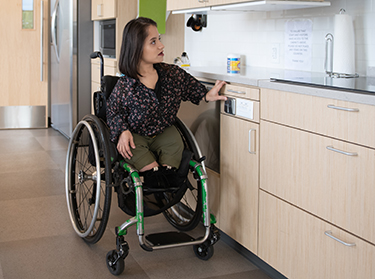
Health Equity
Creating health equity is a guiding priority and core value of APHA. By health equity, we mean everyone has the opportunity to attain their highest level of health. However, efforts to dismantle structural barriers to health are currently being challenged. Now is the time to act: we must protect the progress made and push for bold, equity-driven solutions in health policy.
Explore Related Topics in Health Equity

What is Health Equity?
Featured Resources

More About Health Equity
Health inequities arise from systems that create and reinforce barriers preventing individuals and communities from accessing the conditions needed to reach their full potential. These inequities are not random; they result from interconnected systems of power and oppression that shape access to resources, opportunities, and well-being across generations.
Inequities differ from health disparities, which are measurable differences in health outcomes between groups defined by factors such as race, gender, age, ability, income, or geography. Health disparities are one way to assess our collective progress toward achieving health equity.
How do we achieve health equity? We work to transform the systems and structures that create inequities in the first place. We value all people equally. We optimize the conditions in which people are born, grow, live, work, learn, and age. We collaborate across sectors to address the social and structural factors that influence health, including employment, housing, education, healthcare, public safety, and food access. We also name and confront racism and other forms of systemic oppression as forces that determine how these resources and opportunities are distributed.
APHA Press


Advancing Equity and Justice
This book offers strategies to shift and share power with communities in ways that not only level the playing field, but change the rules of the game entirely.

Racism: Science and Tools for the Public Health Professional
A practical guide to understanding and addressing the health impacts of racism.

Additional Resources

Equity in publications | Guidance for Ensuring Quality in Scientific Publication Through Inclusivity and Transparency (EQSPI)
Opportunities for public health action | Achieving Environmental Health Equity: The Need and Opportunities for Public Health Action
Policy brief | Promoting Transgender and Gender Minority Health through Inclusive Policies and Practices
Equity & advocacy learning series | Centering equity in public health advocacy: a learning series on PHERN
Webinar & Playbook | The Climate Change and Health Playbook: Adaptation Planning for Justice, Equity, Diversity and Inclusion
Creating the Healthiest Nation: Opportunity Youth (PDF): Highlights health risks for disconnected youth and the potential benefits of re-engaging in school or work.
Creating the Healthiest Nation: Children's Environmental Health (PDF): Shows how exposure to pollutants in childhood can lead to lifelong health problems.
Creating the Healthiest Nation: Health & Housing Equity (PDF): Explains how racism and discriminatory housing policies created health and housing inequities.
Creating the Healthiest Nation: Water and Health Equity (PDF): Addresses unequal access to safe, affordable water and offers recommendations to ensure clean water for all.
Creating the Healthiest Nation: Advancing Health Equity (PDF): Describes why health inequities harm communities and outlines key principles for promoting equity.
Creating the Healthiest Nation: Environmental Justice for All (PDF): Defines environmental justice and shows how race predicts exposure to toxic facilities, offering steps for change.
Creating the Healthiest Nation: Health and Educational Equity (PDF): Identifies barriers to high school graduation and offers strategies to improve student support and learning environments.
Equity, justice at heart of public health, new APHA book says
Environmental justice work targeted by Trump DEI orders | The Nation's Health
New edition of popular APHA Press book explores racism, health equity
Ending inequities in Indigenous health begins with partnerships
Special Section: Addressing health equity through state, regional partnerships
COVID-19 Vaccination: An Equitable Response urges equity as a priority to curb the pandemic's devastation on communities of color. Share the fact sheet in English (PDF) and Spanish (PDF)
COVID-19's Impact on Housing Instability offers a visual overview of how the pandemic has put millions more at risk of eviction.
COVID-19's Impact on Health of the Unsheltered underscores how people experiencing unsheltered homelessness, especially those from marginalized communities, are at higher risk of COVID-19 illness and death.
Please view this spreadsheet for more partner resources: APHA DEIA Toolkit List
- Communicating Now: Framing for Health Equity – Frameworks Institute
Fighting for Equitable Transportation: Why It Matters fact sheet (PDF)
Equity Atlases: How Data and Maps Can Illuminate Transportation and Equity fact sheet (PDF)
At the Intersection of Active Transportation and Equity: Joining Forces to Make Communities Healthier and Fairer (PDF) produced by Safe Routes to School, with support from APHA and CDC









